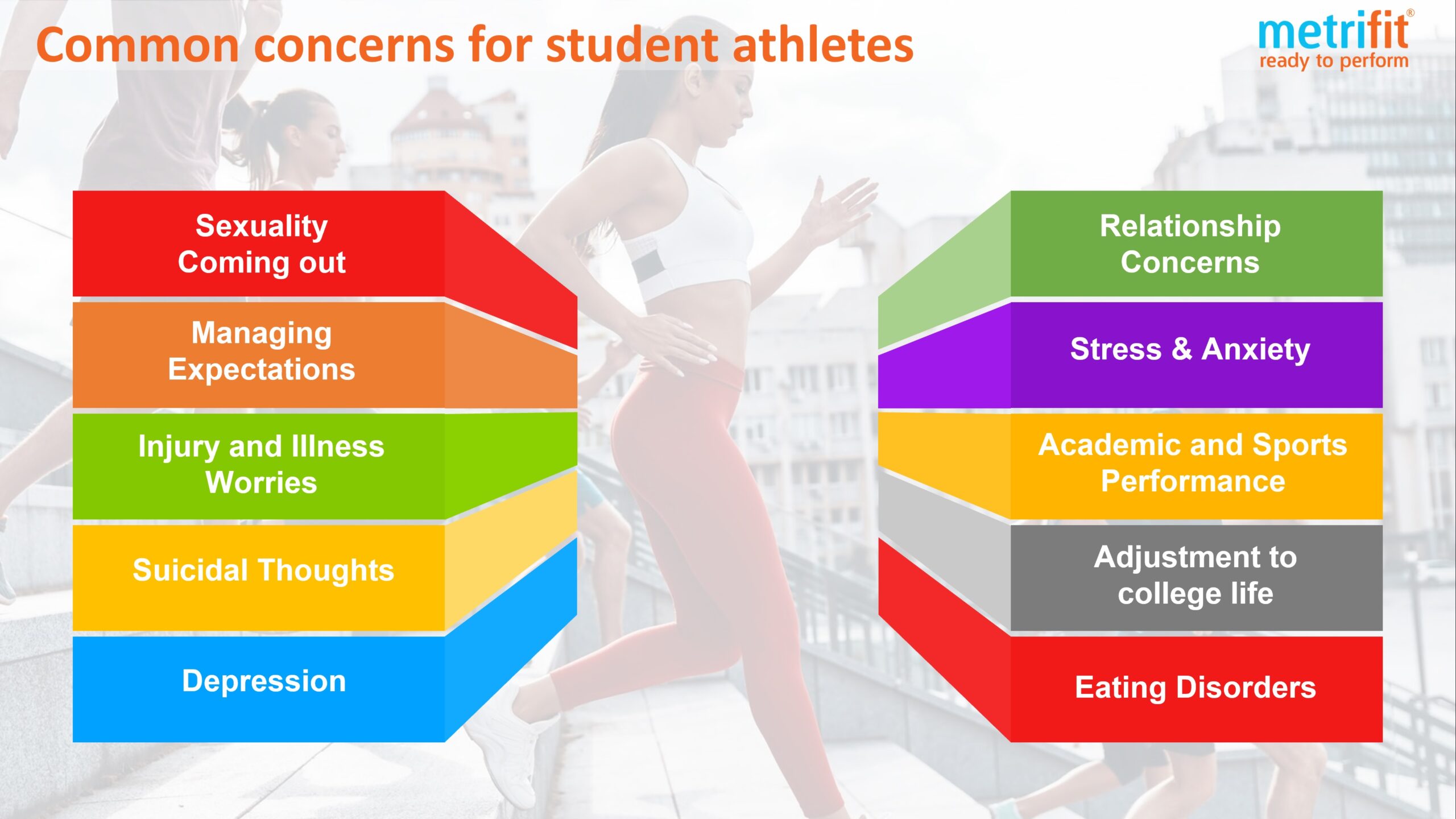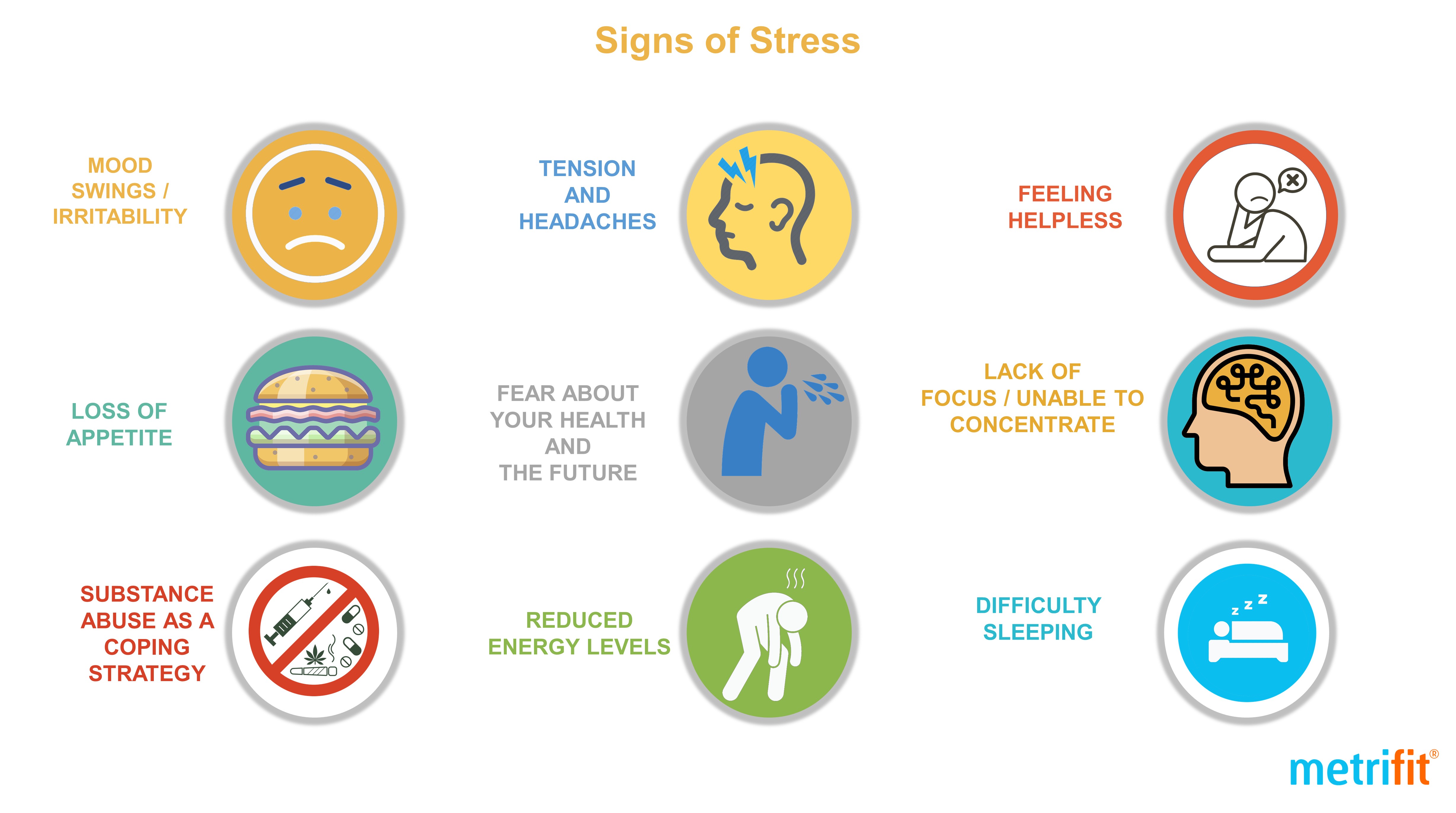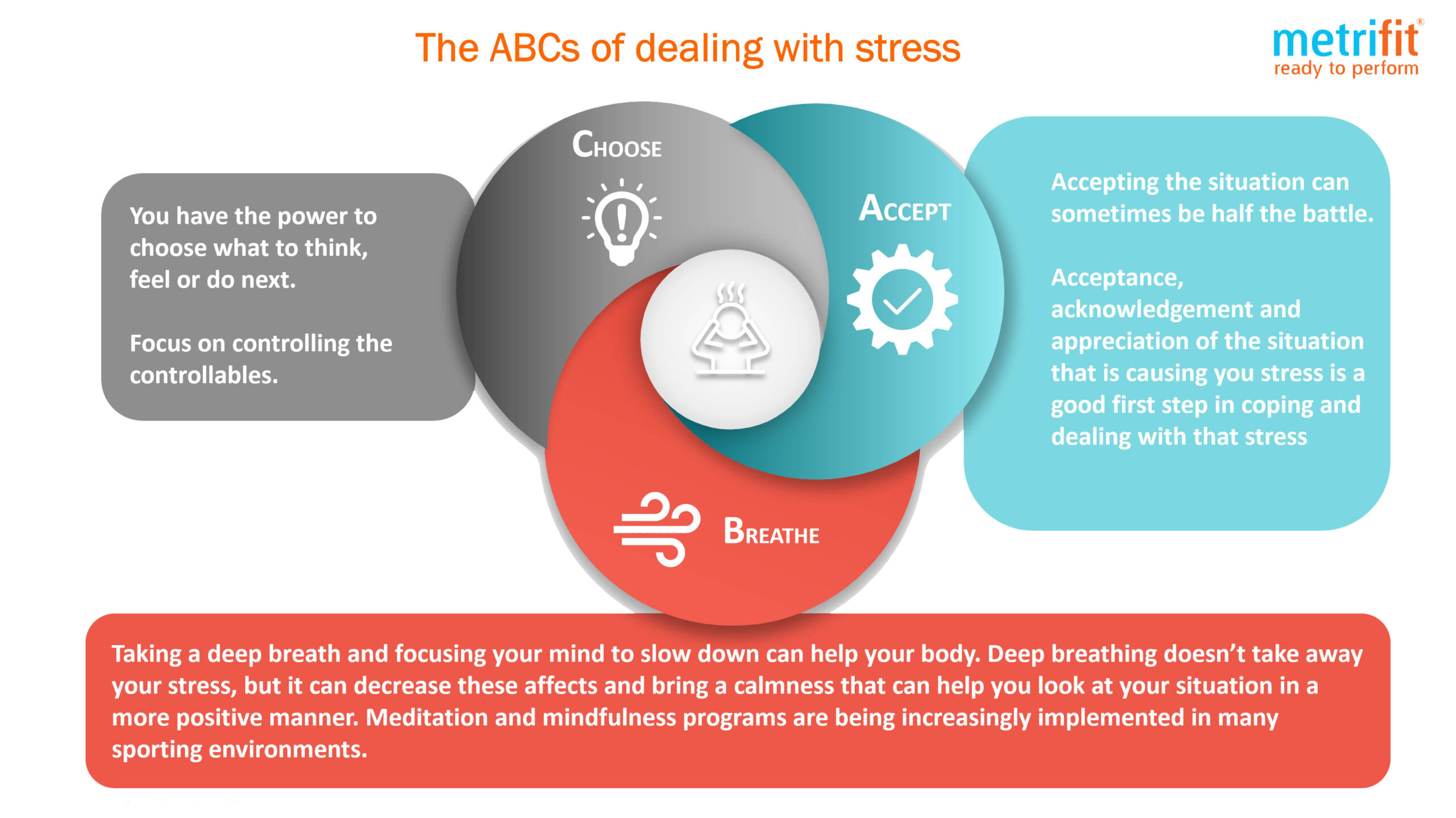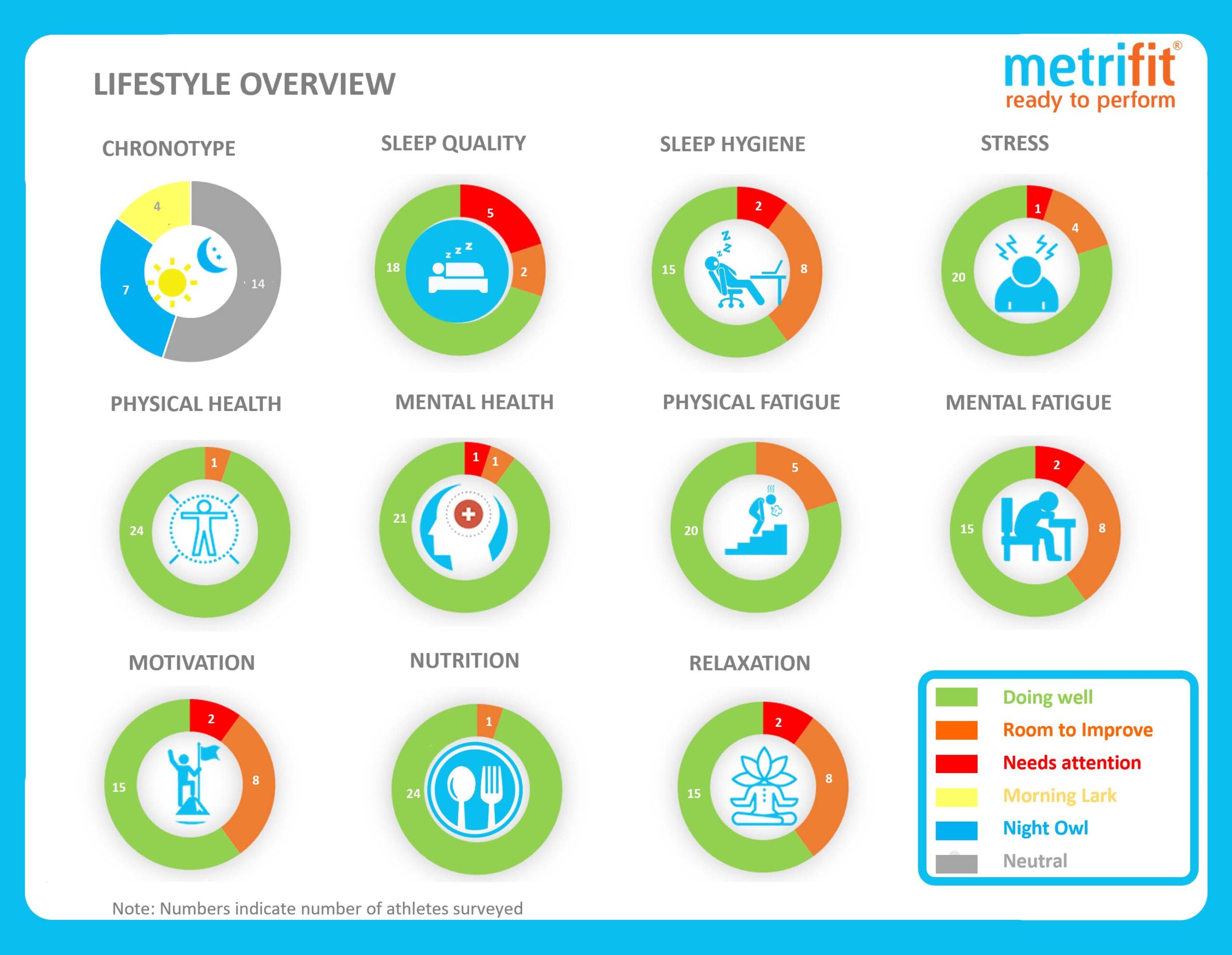Effects of stress on academic and athletic performance
Although there are many advantages to being a High School or College student, this period of a young person’s life certainly doesn’t come without its challenges. Naturally, there is a huge pressure to succeed in their studies and this comes from within the student as well as from parents and teachers. There is the challenge to fit into a new social network, living away from home, and often money issues. For those involved in athletics, there is the added pressure to remain in peak physical and mental condition and maintain optimal athletic performance. Being aware of stress and its source allows you the opportunity to deal with the issues and ensure that you reach the maximum performance in terms of studies and sport. Realizing that the stress issues you may be experiencing are very common across student athletes in general can help you overcome any barriers in seeking help when you need it.

Causes of student stress
According to Ross, Neibling and Heckert (1999) there are several explanations for increased stress levels in college students.
First, students have to make significant adjustments to college life. Second, because of the pressure of studies, there is strain placed on interpersonal relationships. Third, housing arrangements and changes in lifestyle contribute to stress experienced by college students. In addition, students in college experience stress related to academic requirements, support systems, and ineffective coping skills.
While a certain amount of stress can be effective in helping us respond to challenges, Sian Beilock, President of Barnard College and a former associate professor of psychology at the University of Chicago, points out that too much stress can have a negative impact on a student, but adds that there are ways to deal with the pressure in order to reach your potential.
High-stakes learning and performance situations can put a counterproductive stress on students. However, there is a growing body of research showing that fairly simple interventions can lower students’ anxiety about tests and boost what they learn in the classroom. These interventions don’t teach academic content, they target students’ attitudes

Mental and physical consequences
It is important if not essential that coaches understand the types of stressors collegiate athletes face so they can help them manage the negative effects that stress may have on both their athletic and academic performance.
Recent research detailed in Monitoring Training Loads and Perceived Stress in Young Elite University Athletes by Mike Hamlin et al examined subjective data on 182 university sports scholars over a 4 year period at Lincoln University, New Zealand. Using Metrifit, they monitored subjective markers such as mood state, energy levels, academic stress levels, sleep quality and quantity, muscle soreness and training loads along with rates of injury and illness. The research highlighted the link between stress and illness and/or injury and the importance of monitoring:-
We found that athletes overall stress levels increased as the semester continued until finally peaking at exam time. As stress increased towards exam time, energy levels and sleep parameters worsened and so our athletes were suffering from a number of potentially hazardous influences. What’s more, is that we found that when taken together, an athletes perceived mood, sleep duration, energy levels and academic stress levels were able to predict, with a reasonable degree of certainty, injury in our athletes. We also found that at times of highest stress, athletes suffered more illness. Finally, as others have found previously, we showed that a sudden increase in training load, especially during pre-season, resulted in an increase in injuries
Signs of Stress
With such strong evidence available as to how stress levels can affect both athletic and academic performance, knowing the causes can be invaluable to the student, coach, teachers and parents.

Young people in general often do not seek professional help for mental health problems and elite athletes may be less likely to seek help than non-athletes. The British Journal of Sports Medicine recently published their review of 52 studies in this area and found that stigma is the main reason why elite athletes with mental issues don’t seek the help they need. A poor understanding of mental illness, busy schedules, and gender stereotyping also play their part. The research points out that:-
Athletes fear, possibly rightly so, that disclosing mental health symptoms or disorders would reduce their chances of maintaining or signing a professional team contract or an advertising campaign
Educating coaches, athletic trainers and students is crucial to help tackle this problem. They all have a critical role to play in helping to de-stigmatize mental health issues and promote a culture of well-being.
In Focusing on Student-Athletes’ Mental Health, Jason Scott points out that destigmatizing the conversation around mental health is an important part of the equation.
If you roll your ankle, you don’t hide that injury from your team, right? We need to attack the stigma that [depression] is something you have to hide
Given the increased anxiety levels for athletes during the current pandemic, the importance of understanding and supporting student-athlete mental wellness has never been more important.
Dealing with Stress
In Managing Stress and Anxiety Is As Easy As ABC, Dr. Steve Graef, a former sport and performance psychologist at The Ohio State University outlines a useful approach that advocates acknowledging and appreciating that times are tough and that stress is a part of life.
A: Accept
When you’re in a stressful or tough situation, accepting the situation can sometimes be half the battle. Often it is not so much the demand that causes the stress but our perception of that demand. It is often better to ‘ride the wave rather than swim against it’. Acceptance, acknowledgement and appreciation of the situation that is causing us stress is a good first step in coping and dealing with that stress.
B: Breathe
Taking a deep breath and focusing your mind to slow down can help your body. When you breathe deeply, your body sends a message to your brain to calm down and relax. When you are stressed your body can react with an increased heart rate, fast breathing and high blood pressure. Deep breathing doesn’t take away your stress, but it can decrease these affects and bring a calmness that can help you look at your situation in a more positive manner. Meditation and mindfulness programs are being increasingly implemented in many sporting environments.
C: Choose your Focus
You have the power to choose what to think, feel or do next. Focus on controlling the controllables. Every sport has specific demands that need to be met in order to compete successfully. You need to be competent across the 4 corners of talent development – Physical, Technical, Tactical and Psychological. Wasting time worrying over things you have no control over can deplete your positivity and energy, leaving you unable to put effort and positivity into what you can control. Preparing yourself through optimal physical preparation, nutrition, sleep and positivity can increase your confidence and reduce stress levels. You always have total control over the attitude that you take when faced with a situation. Self-talk, goal setting and imagery are all useful tools to help you achieve this.

Monitoring stress levels
It is clear that there is a need for monitoring, as knowing when an athlete is being affected by stress is hugely important for a coach. Discovering if an athlete stress levels are becoming a burden can allow the coaching team to identify the source and take actions to solve the problem. This ensures the athlete is in the best possible condition to train and perform and allows them the best opportunity to succeed.
Metrifit provides a simple and effective method for athletes to record their stress as part of its athlete monitoring package. Stress levels are part of the daily well being questionnaire included in Metrifit and when an athlete indicates stress levels are up they are asked to provide additional information to help coaches and staff determine how they should respond to that information. Metrifit’s daily traffic light report will indicate what issues athletes are having and who warrants a follow up. The analytics provided by Metrifit will also look for deviation from normal patterns at the individual level across many variables including stress. Educating and empowering athletes to improve their lifestyle can pay huge dividends on the playing field. Metrifit’s new Lifestyle Profiling is akin to a ‘health check’ for your team. It provides invaluable insight into the well-being of your team with clear visuals that help you make informed decisions to prepare your athletes for optimal performance.

To find out more about our Metrifit Ready to Perform product or our new lifestyle profiling contact us at or click on ‘Request Demo’ below.
Follow @metrifit

References
Monitoring Training Loads and Perceived Stress in Young Elite University Athletes
Study shows direct link between health-related behaviors and grades by Sam Savage
The Impact of Stress on Academic Success in College Students
How Stress Can Affect Athletic Performance: Listen Up, Tiger by Roger Covin, Ph.D
10 Ways Stress Can Mess with Your Workouts
Stress in elite sports by Andrew Wood
The impact of stress on students in secondary school and higher education
































 Previous Post
Previous Post Next Post
Next Post





